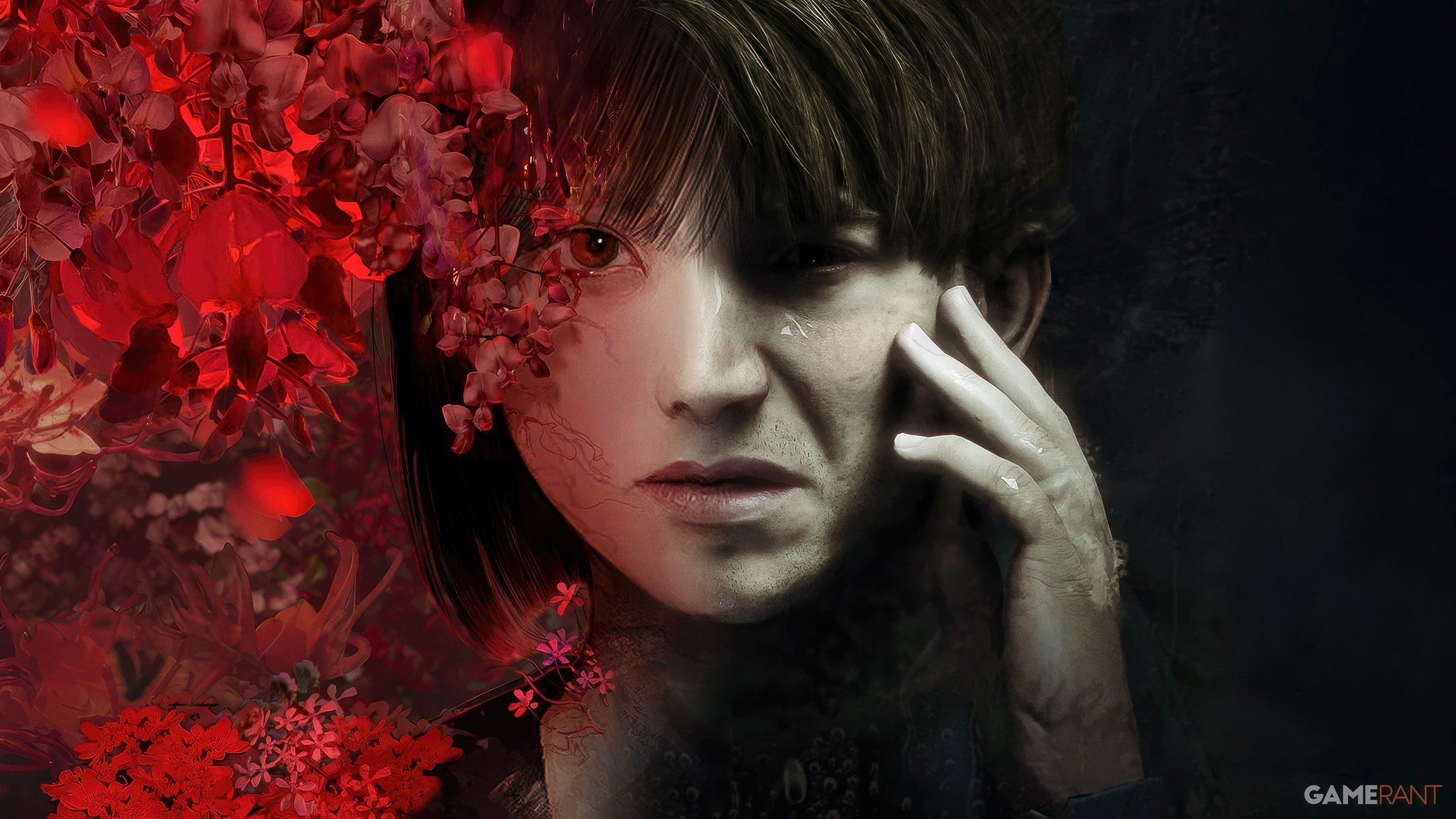Silent Hill puts a ton of stake into its protagonists, and Silent Hill f continues this trend. Shimizu Hinako, despite being one of the youngest lead characters in Silent Hill history, is exceptionally nuanced, complex, believable, and likable, putting her in conversation with the series’ best leading men and women. And like any good Silent Hill protagonist, Hinako is tortured in her own way.
Major spoilers ahead for Silent Hill f and Silent Hill 2.
But how does she stack up against Silent Hill 2‘s dark hero, James Sunderland? Considering that he and Hinako are essentially the faces of modern Silent Hill for the time being, it’s a question worth asking, especially since their similarities and differences say a lot more about the franchise than you might think. Indeed, James and Hinako both embody the greatest strengths of Silent Hill, and they are central to making each of their games effective. More than that, they define the narratives they star in: Hinako is the heart and soul of Silent Hill f, just as James is the heart and soul of Silent Hill 2.
James Sunderland and Shimizu Hinako Are Both Tortured by Love and Marriage
Both James and Hinako Rebel Against Matrimony
From the very first minutes of Silent Hill 2, James’ mission is clear: he’s arrived in town to find Mary, his late wife. He believes, impossibly, that she is somehow alive in Silent Hill, Maine, where they had once vacationed. After braving the town’s horrific machinations, it’s revealed that Mary didn’t in fact succumb to her terminal illness but rather died at the hands of James himself.
He resented and pitied his sick wife, whose poor health drove her toward ever more florid emotional abuse. It’s suggested that Mary actually wished to be euthanized by James to some extent, but James wanted to be free of Mary regardless, and this knowledge drives him beyond the brink of insanity.
Then there’s Hinako, a child thrust into an unwanted arranged marriage that’s even more disturbing than it seems at first blush. Naturally, the spirits of Silent Hill f‘s Ebisugaoka are at work here, looking to seize greater power by wedding a local mortal to their lead deity, who has possessed a boy belonging to an affluent family. It’s all rather complicated, but the visceral, supernatural horror of this pairing is depressingly familiar for many women, especially of that era: much of the time, marriage is more like a business deal than a matter of love, the woman a piece of property being traded (typically by her father) in exchange for some sort of reward or advantage.
In the case of Silent Hill f‘s Hinako, her father sells her to pay off his debts, but women throughout history have been forced into marriage as part of diplomatic arrangements, land disputes, peace treaties, and other reasons that have little to nothing to do with their best interests.
Thus, when Hinako rebels against her arranged marriage in Silent Hill f, she is really fighting the patriarchal system that consumes young women and forces them to surrender their identities at the feet of their spouses. Such submission is referred to as a woman’s “duty” at several points in the game. Hinako refuses to bend to the authority of her would-be husband, but the possibility of losing herself (symbolized by the destruction of her physical body in Silent Hill f‘s Dark Shrine) is always a looming threat.
While James and Hinako are both tormented by the bonds of marriage, they are separated by a fundamental distinction: James is a victimizer, while Hinako is a victim. James is a mentally ill alcoholic full of resentment, pushed to the ultimate crime without any supernatural interference. In some ways, this makes James more compelling—he’s a murderer who is also clearly remorseful—but also a bit less relatable and nuanced, with less real-world relevance.
Hinako is far more well-adjusted and, in a sense, honorable in her pursuits. While this may keep her from being as morally complex as James, it allows for more socially impactful, resonant storytelling, as she can represent a significant portion of humanity, not just an extreme fringe, and also a post-modern Japan, in what is undoubtedly the most unique setting and narrative swing for the Silent Hill franchise so far.
